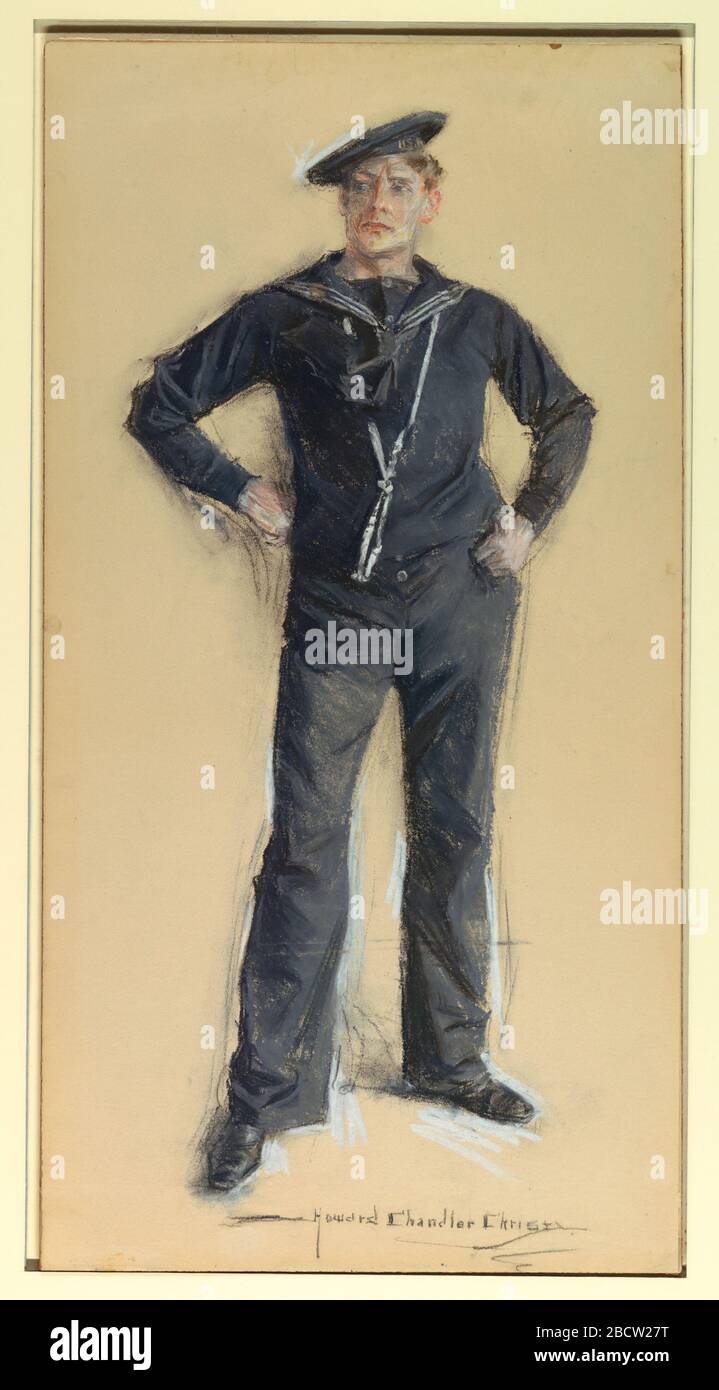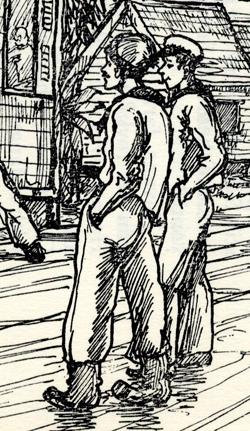Sailor, mariner, salt, seaman, tar are terms for a person who leads a seafaring life. A sailor or seaman is one whose occupation is on board a ship at sea, especially a member of a ship's crew below the rank. Jack Tar (also Jacktar, Jack-tar or Tar) is a common English term originally used to refer to seamen of the Merchant or Royal Navy, particularly during the period of the British Empire. Dockside to Downtown Through much of the 20th Century, a rough-and-tumble Jack Tar Togs ® sailor suits and dresses were standards for kids across the U.S. Beat, knock, or whale the tar out of, to beat mercilessly. Tar and feather, to coat (a person) with tar and feathers as a punishment or humiliation. Tar with the same brush, to regard as having the same unfavorable qualities as one whose shortcomings are known. before 900; (n.). When you are using the word 'tar' to signify a sailor you are exactly not using a word on its own but only a short form of the word tarpaulin and the meaning of this word can unveil the reason behind the use of the word 'tar' being used for a sailor.
Jack Tar (also Jacktar, Jack-tar or Tar) is a common English term originally used to refer to seamen of the Merchant or Royal Navy, particularly during the period of the British Empire. By World War I the term was used as a nickname for those in the U.S. Navy.[1] Members of the public and seafarers alike made use of the name in identifying those who went to sea. It was not used as a pejorative and sailors were happy to use the term to label themselves.[2]
Etymology[edit]

There is some dispute among historians about the origin of 'Jack', but it was a frequently used generic that identified the mass of common people.[3] There are several plausible etymologies for the reference to 'tar':

- In the age of wooden sailing vessels, a ship's rigging was rope made of hemp, which would rot quickly in such a damp environment. To avoid this, the ropes and cables of the standing rig were soaked in tar, which had to be replenished by tarring.[4][self-published source]
- Seamen were known to 'tar' their clothes before departing on voyages, in order to make them waterproof, before the invention of waterproof fabrics. Later they frequently wore coats and hats made from a waterproof fabric called tarpaulin. This may have been shortened to 'tar' at some point.[3]
- It was common among seamen to plait their long hair into a ponytail and smear it with high grade tar to prevent it getting caught in the ship's equipment.[1]
Sailors Tar Hair
Usages[edit]
- Gilbert and Sullivan's operetta, H.M.S. Pinafore, subtitled The Lass That Loved a Sailor, uses the synonym 'tar' frequently in its dialogue, including the songs 'The Merry Maiden and the Tar' and 'A British Tar.'
- One of John Philip Sousa's lesser known works was his 'Jack Tar March,' written in 1903, which featured 'The Sailor's Hornpipe' tune in one of its segments.
- Jack Tar: Life in Nelson’s Navy, best-selling non-fiction book written by Roy and Lesley Adkins about the real lives of sailors in Nelson's age.[5]
- The traditional English folk song 'Go to Sea Once More' (alternately titled 'Jack Tarr the Sailor') tells the tale of a sailor by the name of Jack Tarr who loses everything after an ill-advised drunken escapade while ashore in Liverpool.
- The traditional English folk song 'Jacky Tar,' sung by Eliza Carthy (previously collected and sung by A. L. Lloyd as 'Do Me Ama'): Roud 511; Laws K40; Ballad Index LK40.[6]
- John Adams called the crowd involved with the Boston Massacre 'a motley rabble of saucy boys, negros and molattoes, Irish teagues and outlandish jack tarrs.'[7]
- 'Heart of Oak,' the official march of the Royal Navy, features the line 'Heart of oak are our ships, jolly tars are our men.'
- Rollins College of Winter Park, Florida chose the 'Tar' as its mascot.[8]
- People born in Swansea, UK are known as 'Jacks' or 'Swansea Jacks.' One explanation for the name is that the people of Swansea had a reputation as skilled sailors and that their services were much sought after by the navy.[9]
- In Anthony Shaffer's comedy/thriller play Sleuth, the most prominent of Andrew Wyke's automata is Jolly Jack Tarr, the Jovial Sailor. This life-sized figure laughs, and his body shakes appropriately, with the pressing of a remote control button. He is in several scenes, including one where a clue to a murder is hidden on Jolly Jack Tarr's person.
- The term forms the basis for the expression, 'I'm alright, Jack,' which signifies smug complacence at the expense of others.
- Period writers often referred to the simplicity of Jack Tar, and when he was represented as a drunk and a womanizer, the moral of the story was that he was easy prey for women, publicans and boarding house keepers.[3]



References[edit]
- ^ abStewart Binns (22 October 2015). The Darkness and the Thunder: 1915: The Great War Series. Penguin Books Limited. p. 428. ISBN978-1-4059-1629-5.
- ^Williams, James H (1917). 'A Better Berth for Jack Tar'. The Independent. New York: S.W. Benedict (Sept. 29): 502–503, 515. Retrieved March 24, 2010.
- ^ abc'Jack Tar: Myth and Reality'. More than a List of Crew. Memorial University of Newfoundland. Retrieved 27 June 2018.
- ^Bruzelius, Lars (1998). 'Fordyce: Blacking Rigging, 1837'. Blacking Rigging. The Maritime History Virtual Archives. Retrieved 19 April 2010.
- ^Adkins, Roy; Adkins, Lesley (October 2, 2008). Jack Tar: Life in Nelson's Navy. London: Little, Brown. ISBN1408700549.
- ^'Do Me Ama/Jacky Tar'. Mainly Norfolk: English Folk and Other Good Music. Retrieved 28 June 2018.
- ^'Speech by John Adams at the Boston Massacre Trial'. Boston Massacre Historical Society. Archived from the original on 16 December 2017. Retrieved 28 June 2018.
- ^'What's A Tar?'. Rollins College. Archived from the original on 4 December 2016. Retrieved 30 June 2018.
- ^'Archived copy'. Archived from the original on 2013-10-21. Retrieved 2013-10-21.CS1 maint: archived copy as title (link)
External links[edit]
- Art, George Biddlecombe; Steel, David (1848). The Art of Rigging. Internet Archive. London, England: Charles Wilson. pp. 36, 52. OCLC44687779.
- Kipping, Robert (1861). Rudimentary Treatise on Masting, Mastmaking and Rigging of Ship. Internet Archive. London, England: John Weale. pp. 99–101, 105, 108. OCLC26927349.
| Look up jacktar in Wiktionary, the free dictionary. |
Tar Sailor
